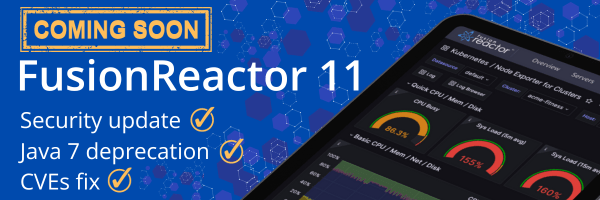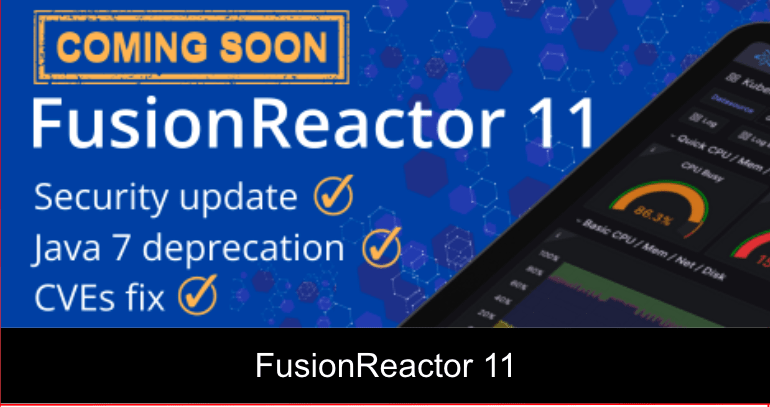
FusionReactor 11 release coming very soon
FusionReactor, the renowned application performance monitoring (APM) tool, is gearing up to release FusionReactor 11. This upcoming release promises a significant improvement in security updates, reflecting the company’s commitment to keeping your applications safe and secure. However, one notable change in this release is the discontinuation of Java 7 support, a decision made to address critical CVEs (Common Vulnerabilities and Exposures). In this blog post, we’ll explore the key updates in FusionReactor 11, the importance of security updates, and what it means for users still on Java 7.
Key improvements in FusionReactor 11
While there are various improvements, the standout change in this release is related to security updates. Let’s take a closer look at these key improvements:
-
Improved security updates
FusionReactor 11 places a strong emphasis on enhancing the security of your applications. In today’s digital landscape, where data breaches and cyber threats are becoming increasingly common, safeguarding your applications is paramount. FusionReactor 11 is designed to help you stay one step ahead of potential security vulnerabilities, ensuring your applications remain protected.
-
Java 7 support discontinued
While the enhanced security and feature improvements in FusionReactor 11 are undoubtedly exciting, it’s important to note that Java 7 support has been dropped in this release. This decision has implications for users who are still running applications on Java 7.
For those who wish to continue using Java 7, it’s advisable not to update to FusionReactor 11 and instead stick with FusionReactor 10. By doing so, you can continue to receive support and updates for your Java 7 applications without any compatibility issues.
Exciting new features also coming soon
- OpsPilot AI assistant
- Improved dashboard navigation
- Anomaly detection
- Deep integration
Look out for our next ‘What’s new in FR’ blog post for more information on these improvements that are sure to enhance your monitoring experience.
About FusionReactor
As technology advances, it is more important than ever to view your entire system and get full-stack observability. To do this, you require three key data types: metrics, logs, and traces. However, it is not enough to merely collect this telemetry data. You must understand the relationships between data points to solve issues quickly, and for this you need FusionReactor.
FusionReactor is a full-stack observability solution that creates and maintains deep visibility into these relationships. With FusionReactor, you can effortlessly analyze, visualize, and troubleshoot your entire system all in one place. This powerful tool not only provides you with comprehensive insights but also incorporates generative AI, using natural language, to assist in monitoring. With OpsPilot, you can transform the way you monitor and manage your applications allowing you to investigate performance issues with unprecedented precision quickly. We help you to put your system health in context by swiftly locating and eliminating issues to create a more consistent end-user experience ultimately.










